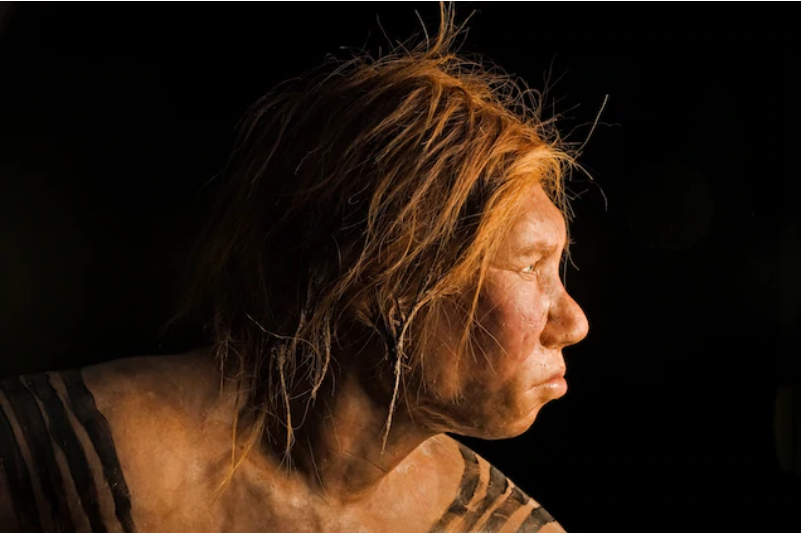
©JOE MCNALLY, NAT GEO IMAGE COLLECTION
Pre-reading questions:
- What comes to mind when you think about the people who lived in ancient times, similar to early humans?
- What do you know about DNA and its significance in genetic research?
Vocabulary:
- feature /FEE-cher/
- interact /in-ter-AKT/
- trace /treys/
- discovery /dih-SKUHV-uh-ree/
- evolution /ev-uh-LOO-shuhn/
[verb] – to include someone or something as an important part
The documentary will feature interviews with leading experts in the field, providing valuable insights into the topic at hand.
[verb] – to communicate or engage with someone or something
During the workshop, participants will have the opportunity to interact with experienced professionals in their respective fields.
[noun] – a sign that something has happened or existed
The ancient ruins were a trace of a once-thriving civilization, offering glimpses into their culture and way of life.
[noun] – the process of finding information, a place, or an object, especially for the first time, or the thing that is found
The discovery of the ancient manuscript shed new light on the history and culture of the civilization that once inhabited this region.
[noun] – the way in which living things change and develop over millions of years
The theory of evolution, proposed by Charles Darwin, revolutionized our understanding of how species adapt and diversify over vast periods of time.
Article reading:
A new study featured in Cell challenges previous assumptions about Neanderthal ancestry in modern Africans and Europeans. Around 60,000 years ago, early humans left Africa and interacted with various hominin groups. Neanderthals inhabited Europe and the Middle East, while Denisovans settled in Asia. Intermingling between these groups left genetic marks that continue to exist in many populations today. Europeans and Asians carry roughly 2% Neanderthal DNA, and Asians also have additional Denisovan DNA, with levels reaching up to 6% in Melanesians. Modern African populations have more traces of Neanderthal DNA than previously believed, accounting for about a third of what has been found in Europeans and Asians. This discovery adds complexity to the story of human migration and genetic exchange, advancing the understanding of human evolution and genetic heritage.
Comprehension questions
- What does the study published in Science Advances reveal about Neanderthal DNA in modern human populations?
- How much Neanderthal DNA is typically found in the genetic makeup of most humans?
- Which populations show slightly higher amounts of Neanderthal DNA, and what are the percentages mentioned in the article?
- Who led the study on Neanderthal DNA, and why is it considered significant?
- What did early humans do around 60,000 years ago, and how did it lead to genetic marks in modern populations?
Discussion questions
- Have you ever been curious about your family’s genetic history and if you might have any Neanderthal or Denisovan DNA? If so, what got you interested, and did you try to learn more about it? If not, is it something you might want to explore in the future?
- Have you ever talked about or learned about how humans evolved and mixed with ancient human species like Neanderthals and Denisovans? This could be in school, a museum, or on your own. If so, what part of this topic interested you the most, and did it change how you see human history? If not, does this article make you want to find out more about our ancient ancestors? Why or why not?
- Do you think the recent findings about Neanderthal and Denisovan DNA in modern humans make us question what we thought about how humans moved and swapped genes?
- What do you think are some potential benefits of studying ancient DNA?
- How do you believe knowing about ancient DNA changes what we understand about human history and how humans evolved?